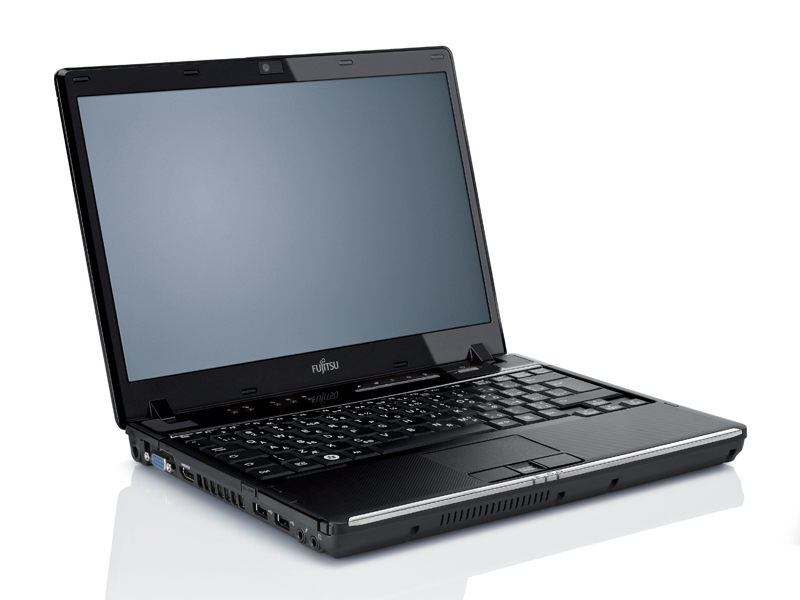TechRadar Verdict
Pros
- +
Slim and light chassis
- +
Incredible battery life
- +
Strong performance for a low-voltage CPU
- +
Excellent features
- +
3G connectivity
Cons
- -
Plastic build
- -
Cramped keyboard and touchpad
- -
Display lacks vibrancy
- -
Basic 3D performance
- -
Not much storage
Why you can trust TechRadar
Modern laptops display incredible variety in terms of raw power. From the humble netbook (such as the Asus Eee PC 1005PE) to the beefiest gaming rig (like the MSI GT640), the difference in performance is often astonishing.
However, the difference in price and portability is just as eyebrow-raising, with a top-end multimedia machine costing roughly the same as a house deposit in London, and weighing as much as your washing machine.
Intel has therefore come up with a 'best of both worlds' solution with its latest processor, the low-voltage Core i7 620UM, which offers great performance on a smaller scale complete with greatly reduced power consumption.
The Fujitsu Lifebook P770 is one of the first laptops we've seen with this new technology and we eagerly tested it out to see what difference the new low-voltage Core i7 processor would make.
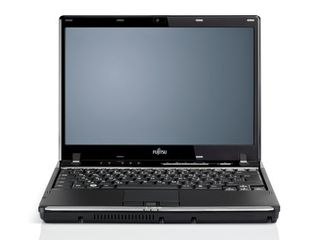
With a weight of just 1.5kg, the Fujitsu Lifebook P770 is an ultraportable laptop that is almost as light as a netbook. It's just as compact too, with a 12.1-inch screen and a chassis that's only 30mm thick.
The Lifebook can be slipped into a bag or case and carried around all day without weighing you down.
One of the drawbacks is the plastic look and feel of the laptop, with noticeable flex around the palm rests and the entire right side of the chassis. This doesn't impact usability at all, but does considerably cheapen the overall feel.
The Fujitsu Lifebook P770's shiny lid is also easily bent, which risks damage to the display, so care should be taken to lift the laptop by its body and not the lid.
Despite the compact chassis, Fujitsu has packed a huge number of features into the Lifebook P770. DVD drives are often omitted from smaller laptops but one is built in here, and this boosts portability because an external optical drive is not needed.
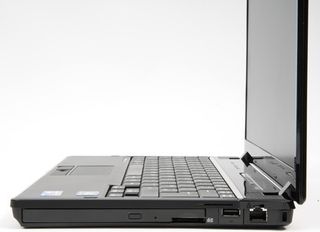
An ExpressCard slot is available for adding peripherals, along with three USB ports and VGA and HDMI connections.
A row of shortcut buttons is laid out just above the keyboard, which enable quick access to various power and networking options, such as turning down screen brightness and connecting to a wireless network.
Another button enables you to lock the computer when leaving your desk, to prevent unauthorised users from accessing your private data.
To further boost security, a fingerprint scanner can be found just below the Fujitsu Lifebook P770's touchpad, which can be used as an alternative to a password for booting up the laptop – perfect for anyone with a lousy memory.
If further ports are required, the Lifebook P770 can be sat on an included docking station. This adds a DVI port for hooking up a DVI-compatible external monitor, an eSATA port for fast data transfer with external hard drives, and four extra USB ports for a massive total of seven.
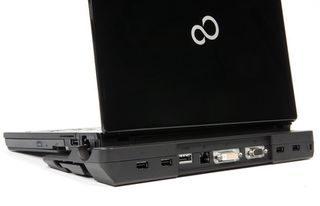
The dock also inclines the keyboard at a more comfortable and natural angle for typing at your desk. However, storage is less impressive, with only 160GB of hard drive space to be found within the slimline chassis.
Anyone with large media collections will be forced to carry around discs or external drives containing their albums and movies.
Networking options are much better, with speedy 802.11n Wi-Fi and Gigabit Ethernet available for wireless and wired connections respectively.
This is backed up by built-in Bluetooth support for communicating with portable devices such as mobile phones and wireless headsets.
The Fujitsu Lifebook P770 can also connect to the internet from almost anywhere in the country via phone masts using the built-in 3G module, much like modern smartphones.
A working SIM card must first be inserted into a slot behind the battery, and a data subscription will be needed from a mobile network provider. This often comes with a monthly subscription charge and there may be a cap on the amount you can download, so be sure to shop around.
The Fujitsu Lifebook P770's keyboard is narrow thanks to the reduced-scale chassis, with small-scale keys similar to a netbook.
Anyone used to typing on a full-sized laptop will initially struggle to build up a rhythm, but the period of adjustment is short and the tapered surface of the keys is perfect for touch-typing once you're used to the compact size.
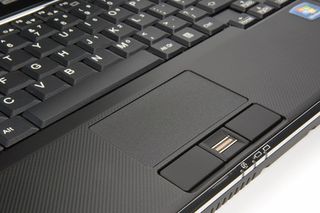
The touchpad is quite cramped too, but accompanied by two firm and well-mounted mouse buttons.
Fujitsu has rejected the glossy screen coating that most modern laptops employ. The Lifebook P770 instead uses a non-reflective 12.1-inch TFT display, which can comfortably be used outdoors even on those rare sunny summer days.
Image reproduction does suffer a little, with colours noticeably muted compared to Super-TFT displays, but photos and videos still look sharp thanks to the 1280 x 800-pixel resolution.
Two processors typically on opposite ends of the power scale are ultra low-voltage (ULV) CPUs, which are smaller chips that offer basic levels of performance in order to conserve battery life, and Intel's latest range of Core i7 processors, which are perfect for hardcore gaming and resource-intensive applications.
However, Intel's new ULV Core i7 processor is a hybrid of the two, which offers buckets of power, but also vastly improved battery life.
The Fujitsu Lifebook P770 is powered by this Core i7 620UM processor and the results are truly stunning.
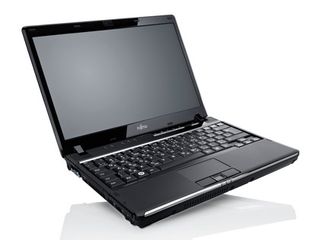
This is easily one of the most powerful low-voltage chips currently available, comparable in performance to Intel's standard Core i3 and top-end Core 2 Duo chips, and we could comfortably multi-task with a number of resource-intensive applications thanks to the dual cores and 4096MB of speedy DDR3 memory.
Unfortunately the Fujitsu Lifebook P770 only comes with an integrated graphics card, with no dedicated video memory. This means it must leech from the main system memory, which is a much slower process.
Only basic 3D performance is possible, so professional design work is a choppy experience and anything but the oldest or most basic 3D games immediately struggle and die.
This isn't Fujitsu's first entry into the ULV laptop market – it recently released the Lifebook P3110, which was powered by a low-voltage Intel Pentium processor.
While the Lifebook P3110 was just as compact and light as the Lifebook P770, the P770 managed far better performance in our benchmark tests and also had greatly improved battery life.
We ran the Lifebook P770 for a huge 427 minutes away from the mains – enough for all-day productivity on the move – compared to the P3110's 314 minutes.

Alien: Romulus finally gets a Disney Plus release date three months after it landed on Hulu, and it'll be with us very soon

I tried Govee’s new AI-powered gaming pixel light, and I finally see a reason to bring generative AI into my home

How smart cities leverage AI to integrate services and improve efficiency
